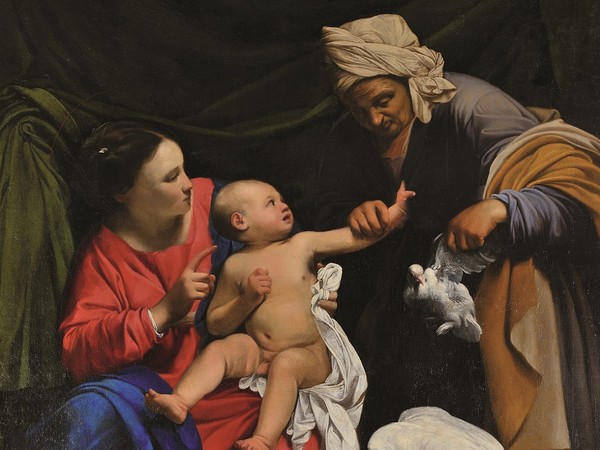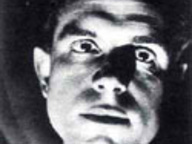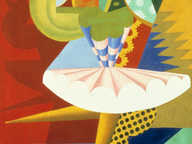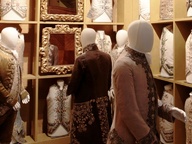Carlo Saraceni a Veneziano between Rome and Europe
Carlo Saraceni, La Vergine e sant’Anna ammaestrano Gesù Bambino sullo Spirito Santo (Pala Lancellotti), 1609-1611. Olio su tela, cm 180 x 155. Roma, Galleria Nazionale di Arte Antica di Roma, Palazzo Barberini.
From 22 Marzo 2014 to 29 Giugno 2014
Venice
Place: Gallerie dell’Accademia
Address: Dorsoduro 1050
Times: Monday 8.15 am - 2 pm; Tuesday to Sunday 8.15 am - 7-15 pm
Responsibles: Maria Giulia Aurigemma, Roberta Battaglia
Organizers:
- Soprintendenza Speciale per il Patrimonio storico artistico ed etnoantropologico e per il Polo Museale della città di Venezia e dei comuni della Gronda lagunare
- sotto l’alto patronato del Presidente della Repubblica
Ticket price: full € 15, rediced € 12, rspecial reduced € 6
Telefono per informazioni: +39 041 5200345
E-Mail info: info@gallerieaccademia.org
Official site: http://www.gallerieaccademia.org
The first major retrospective exhibition of the seventeenth-century painter Carlo Saraceni goes from March 22 to June 29 at the Gallerie dell'Accademia in Venice, in a revised edition , in continuity with the recent exhibition in Rome . An exhibition strongly supported by the Superintendent of the State Museums of Venice, Giovanna Damiani , to make known artist until now almost ignored in his hometown
Carlo Saraceni a Veneziano between Rome and Europe is the exhibition conceived and curated by Rossella Vodret by Maria Giulia Aurigemma , set in the halls of the Galleries trails and second choices exhibition curated by Roberta Battaglia, in order to emphasize in particular the links with the painter the hinterland of Veneto and Venice , where he was born in 1579 and died in 1620.
Saraceni was one of the earliest and most important interpreters of Caravaggio and contributed to the spread of the language leaders by an original Caravaggio , characterized by chromaticism drenched in light of the great sixteenth-century Venetian tradition .
Successful artist educated and refined , developed his art mainly in Rome, where he arrived at about twenty years and where he was known as the " Venetian " . He returned to the lagoon city , called by the Serenissima to make an oil on canvas Palazzo Ducale, but died after only a few months.
The exhibition includes sixty works , including no shortage of major commissioned the painter to some of the most influential Roman families , like the Flight into Egypt Rest on the Camaldolese Hermitage , performed for the Aldobrandini family and paintings done by some of the the most important foreign ecclesiastical congregations , such as the Iberian Sant'Adriano vaccine and in the German city of Santa Maria Soul for whom he painted two masterpieces in the exhibition .
In particular, by pointing out some works that enrich this exhibition as the drawing of Andromeda by Cavalier d' Arpino, preserved in the Cabinet of Drawings and Prints of the Gallerie dell'Accademia in Venice, and for comparison with the small painting of youth Saracens the same subject , a clearly arpinesca , the beautiful St. Rocco 's Galleria Doria Pamphili approached the San Girolamo di Jacopo Bassano , the Gallerie dell'Accademia in Venice , to highlight the component Venetian Bassano and more specifically , the painting of Mary Magdalene penitent of the Art Gallery Civica di Vicenza, to match with other two versions of the same subject .
One section is devoted to illustrate the relationship of the Saracens with some young artists from Verona , Rome fell to around the middle of the second decade of the seventeenth century , who collaborated with the painter in some decorative enterprises ( Ferrari chapel in Santa Maria in Aquiro and Sala Regia at the Quirinale ) .
The series of conferences
Over the period of the exhibition , there will be a series of lectures , organized and curated by Roberta Battaglia, who will aim to explore some aspects of the work of the Saracens in relationship with his contemporary culture with the help of specialized scholars of ' topic at the international level .
Carlo Saraceni a Veneziano between Rome and Europe is the exhibition conceived and curated by Rossella Vodret by Maria Giulia Aurigemma , set in the halls of the Galleries trails and second choices exhibition curated by Roberta Battaglia, in order to emphasize in particular the links with the painter the hinterland of Veneto and Venice , where he was born in 1579 and died in 1620.
Saraceni was one of the earliest and most important interpreters of Caravaggio and contributed to the spread of the language leaders by an original Caravaggio , characterized by chromaticism drenched in light of the great sixteenth-century Venetian tradition .
Successful artist educated and refined , developed his art mainly in Rome, where he arrived at about twenty years and where he was known as the " Venetian " . He returned to the lagoon city , called by the Serenissima to make an oil on canvas Palazzo Ducale, but died after only a few months.
The exhibition includes sixty works , including no shortage of major commissioned the painter to some of the most influential Roman families , like the Flight into Egypt Rest on the Camaldolese Hermitage , performed for the Aldobrandini family and paintings done by some of the the most important foreign ecclesiastical congregations , such as the Iberian Sant'Adriano vaccine and in the German city of Santa Maria Soul for whom he painted two masterpieces in the exhibition .
In particular, by pointing out some works that enrich this exhibition as the drawing of Andromeda by Cavalier d' Arpino, preserved in the Cabinet of Drawings and Prints of the Gallerie dell'Accademia in Venice, and for comparison with the small painting of youth Saracens the same subject , a clearly arpinesca , the beautiful St. Rocco 's Galleria Doria Pamphili approached the San Girolamo di Jacopo Bassano , the Gallerie dell'Accademia in Venice , to highlight the component Venetian Bassano and more specifically , the painting of Mary Magdalene penitent of the Art Gallery Civica di Vicenza, to match with other two versions of the same subject .
One section is devoted to illustrate the relationship of the Saracens with some young artists from Verona , Rome fell to around the middle of the second decade of the seventeenth century , who collaborated with the painter in some decorative enterprises ( Ferrari chapel in Santa Maria in Aquiro and Sala Regia at the Quirinale ) .
The series of conferences
Over the period of the exhibition , there will be a series of lectures , organized and curated by Roberta Battaglia, who will aim to explore some aspects of the work of the Saracens in relationship with his contemporary culture with the help of specialized scholars of ' topic at the international level .
SCARICA IL COMUNICATO IN PDF
COMMENTI

-
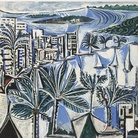 Dal 20 settembre 2024 al 02 febbraio 2025
Milano | Palazzo Reale
Dal 20 settembre 2024 al 02 febbraio 2025
Milano | Palazzo Reale
-
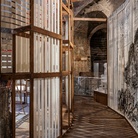 Dal 19 settembre 2024 al 12 gennaio 2025
Roma | Foro Romano e Palatino
Dal 19 settembre 2024 al 12 gennaio 2025
Roma | Foro Romano e Palatino
-
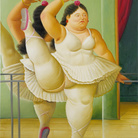 Dal 17 settembre 2024 al 10 gennaio 2025
Roma | Palazzo Bonaparte
Dal 17 settembre 2024 al 10 gennaio 2025
Roma | Palazzo Bonaparte
-
 Dal 14 settembre 2024 al 29 gennaio 2025
Milano | Palazzo Reale
Dal 14 settembre 2024 al 29 gennaio 2025
Milano | Palazzo Reale
-
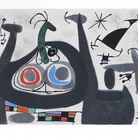 Dal 14 settembre 2024 al 23 febbraio 2025
Roma | Museo storico della Fanteria
Dal 14 settembre 2024 al 23 febbraio 2025
Roma | Museo storico della Fanteria
-
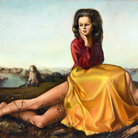 Dal 14 settembre 2024 al 15 dicembre 2024
Parma | Fondazione Magnani-Rocca
Dal 14 settembre 2024 al 15 dicembre 2024
Parma | Fondazione Magnani-Rocca
